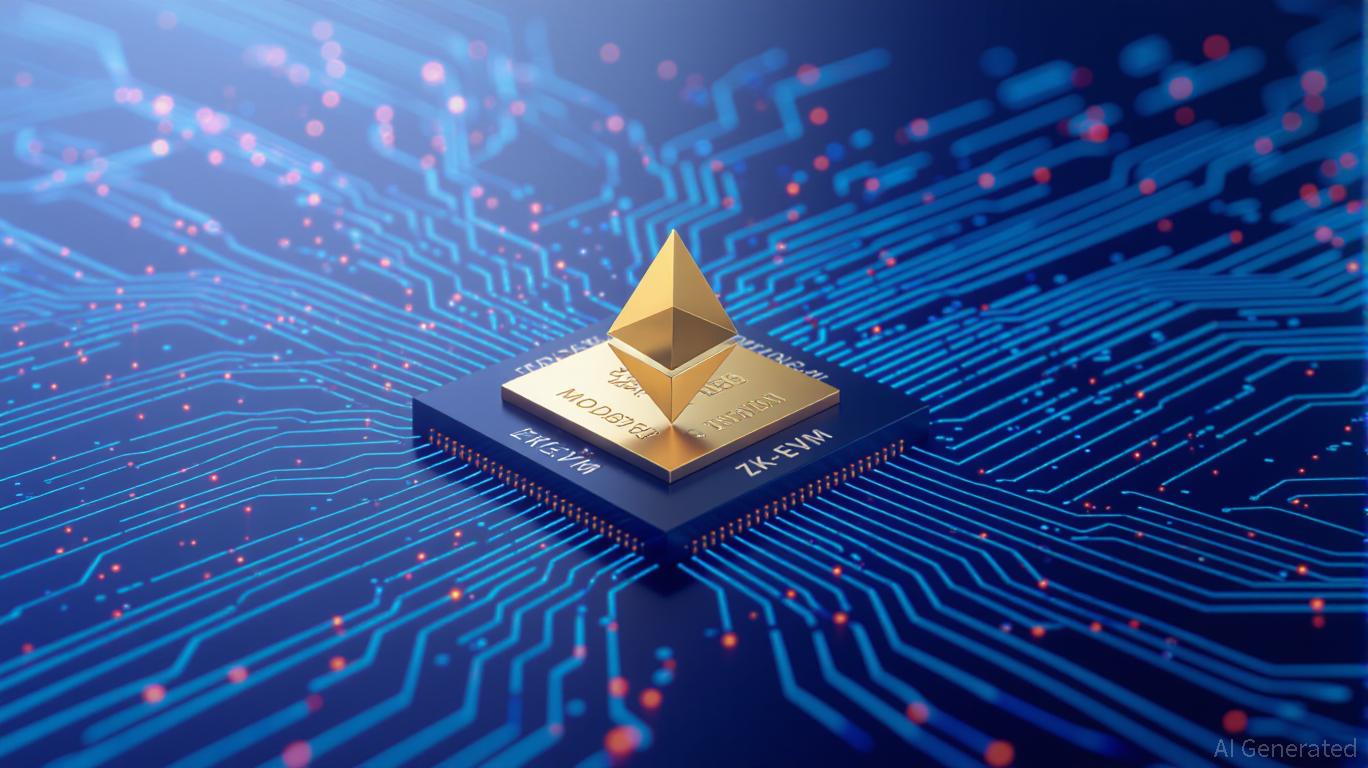Vitalik Buterin Introduces a Novel ZK Research Initiative and Its Potential Impact on Blockchain Scalability
- Vitalik Buterin proposes deprecating Ethereum's modexp precompile to boost ZK proof efficiency, accepting higher gas costs for long-term scalability. - ZKsync's Atlas upgrade achieves 15,000 TPS with open-source liquidity tools, attracting enterprises through privacy and interoperability. - ZK Rollups outperform Optimistic Rollups in security and finality, gaining traction in finance despite higher computational costs. - ZK-based solutions align with regulatory demands, with ZKsync's deflationary tokenom
Technical Breakthroughs: Phasing Out the Modexp Precompile
Buterin’s suggestion addresses a major bottleneck in Ethereum’s design. The modexp precompile, originally intended to speed up modular exponentiation, has unintentionally become an obstacle for ZK-EVM solutions.

ZKsync’s Atlas Update: Demonstrating Enterprise Integration
The Atlas upgrade for ZKsync, released in 2025, showcases how ZK-based technologies can fulfill enterprise requirements. This update
ZK Versus Optimistic Rollups: Comparing Two Approaches
Optimistic Rollups are still favored for their straightforward deployment and compatibility with existing Ethereum contracts, but ZK-based platforms are gaining ground in scenarios that demand instant finality and privacy. A study by ResearchGate points out the main distinctions: Optimistic Rollups use a challenge period to validate transactions, which can delay fund availability, while ZK Rollups rely on cryptographic proofs for immediate finality. This makes ZK Rollups especially suitable for financial operations and identity checks, where both speed and security are essential. However, the higher computational demands of ZK proof generation continue to limit their broader use.
Regulation and Enterprise Uptake: ZK’s Strategic Advantage
As regulatory oversight intensifies, ZK-based solutions are uniquely equipped to address compliance needs. ZKsync’s appeal to institutions has grown as its token shifted from a governance focus to a value-driven model, matching corporate preferences for stable tokenomics.
Investment Perspective: The Enduring Promise of ZK
For those investing in blockchain, the intersection of technical progress, institutional interest, and regulatory fit creates a strong case. ZK-powered Layer 2 networks are
Final Thoughts
Vitalik Buterin’s ZK research initiative is more than a minor technical change—it represents a strategic shift in Ethereum’s scaling direction. By tackling outdated inefficiencies and backing ZK-based platforms like ZKsync, the Ethereum community is paving the way for a blockchain that is scalable, secure, and ready for enterprise use. For investors, the message is unmistakable: ZK-based Layer 2 solutions are not only the future of Ethereum but also a key asset class in the expanding blockchain industry.
Disclaimer: The content of this article solely reflects the author's opinion and does not represent the platform in any capacity. This article is not intended to serve as a reference for making investment decisions.
You may also like
Meme Coin Frenzy Sparked by Whale’s $19 Million Wager and Trump’s Support for Crypto
- A crypto whale injected $19.86 million into 22 meme coins in one hour, reflecting heightened speculative activity amid Trump-era crypto-friendly policies. - Trump-linked Bitcoin miner Hut 8 Corp reported 460% revenue growth, leveraging low-cost operations and 4,004 bitcoins ($400M value) to capitalize on market trends. - Canary Capital's MOG ETF filing triggered a 17% market cap surge for the meme token, highlighting institutional interest in community-driven crypto assets. - Analysts warn of regulatory

India’s Blockchain Strategy: National Tokenisation to Upgrade Financial Infrastructure
- India's economic advisor meets Polygon and Anq Finance to discuss tokenisation frameworks and sovereign digital assets for financial modernisation. - Proposed Asset Reserve Certificate (ARC) model uses government securities as collateral, aiming to create secure, sovereign-backed digital settlement units. - Discussions highlight tokenisation benefits like faster settlements and reduced risks, while stressing regulatory alignment with existing financial infrastructure. - Collaboration positions Polygon as

Fosun's Visionary Move: Digital Assets Propel Insurance Toward a Technology-Enabled Tomorrow
- Fosun Finance's Minsheng Life Insurance launched a virtual asset-linked insurance product, expanding into alternative assets via regulatory-approved "Finance + Technology" integration. - The product secures upfront regulatory approval to mitigate risks, contrasting with India's strict virtual compliance requirements and positioning Fosun to lead digital finance innovation. - Competitors like Hillhouse Capital and Axis Max Life Insurance pursue traditional equity strategies, while Fosun's blockchain-drive

Legal Team Portrays Pardon as Protective Measure Amid 'Crypto Crackdown'
- Binance founder CZ's legal team denied "pay-to-play" claims, asserting his 2025 pardon followed standard procedures and regulatory review. - Attorney Teresa Guillén rejected ties to Trump's crypto ventures, calling allegations "false" and emphasizing Zhao's case was regulatory, not criminal. - Critics like Sen. Warren accused Trump of corruption over World Liberty Financial ties, while the White House defended the pardon as routine presidential authority. - Legal scholars called the pardon "unprecedented
